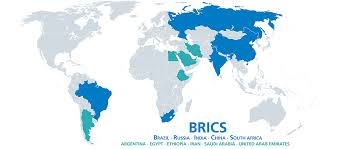As geopolitical tensions between the United States and China intensify, particularly over the control of critical minerals, a new window of opportunity is opening for Africa. The continent’s vast reserves of essential minerals—such as cobalt, lithium, graphite, and rare earth elements—are increasingly recognized as vital components for the global clean energy transition.
With the U.S. aggressively pursuing “critical mineral diplomacy” to reduce dependency on Chinese supply chains, and with China simultaneously expanding its global resource influence, African nations find themselves at the center of a high-stakes strategic realignment. If navigated wisely, this moment could mark the beginning of Africa’s transformation into a global hub for green technology and sustainable industrial growth.
Africa’s Mineral Wealth: A Strategic Advantage
From the Democratic Republic of the Congo’s cobalt to Zimbabwe’s lithium and South Africa’s platinum, Africa holds the keys to powering electric vehicles, renewable energy systems, and battery technologies. These resources are not just economically valuable—they are geopolitically critical.
In a world increasingly defined by decarbonization efforts and supply chain diversification, Africa’s role in mineral supply is shifting from peripheral to pivotal. But unlocking this potential demands more than just extraction; it requires local value addition, long-term planning, and commitment to sustainable practices.
Policy and Infrastructure: The Make-Or-Break Factors
Seizing this opportunity will require bold, coordinated policy reforms across African governments. Without consistent regulatory frameworks, transparent governance, and improved transport and energy infrastructure, the continent risks remaining a raw material exporter with limited developmental returns.
Governments must develop regional strategies that promote downstream processing, invest in green industrial zones, and build partnerships that emphasize technology transfer and workforce development. Regional cooperation through frameworks like the African Continental Free Trade Area (AfCFTA) could also amplify Africa’s bargaining power and attract climate-aligned foreign investment.
A Just and Inclusive Transition
While the focus is on green growth, social and environmental justice cannot be overlooked. The transition must include safeguards for local communities, fair labor standards, and protections against environmental degradation. A just transition should ensure that the benefits of Africa’s mineral wealth are equitably distributed and not concentrated in the hands of a few elites or foreign corporations.
Investing in local innovation and education, especially in science, engineering, and clean energy fields, is essential for ensuring long-term value creation and resilience against global market volatility.
Conclusion: Africa’s Moment to Lead
In the shifting landscape of global trade and energy politics, Africa is not just a passive actor—it has the resources and strategic position to lead. By aligning its critical mineral wealth with sustainable development goals and green technology ambitions, the continent can shape its own industrial future.
This pivotal moment demands vision, integrity, and collaboration. If Africa embraces a forward-looking, equitable approach, it could emerge not only as a supplier of green minerals, but as a driver of the global green revolution itself.
for mor news please visit our website africaciviclens.com




